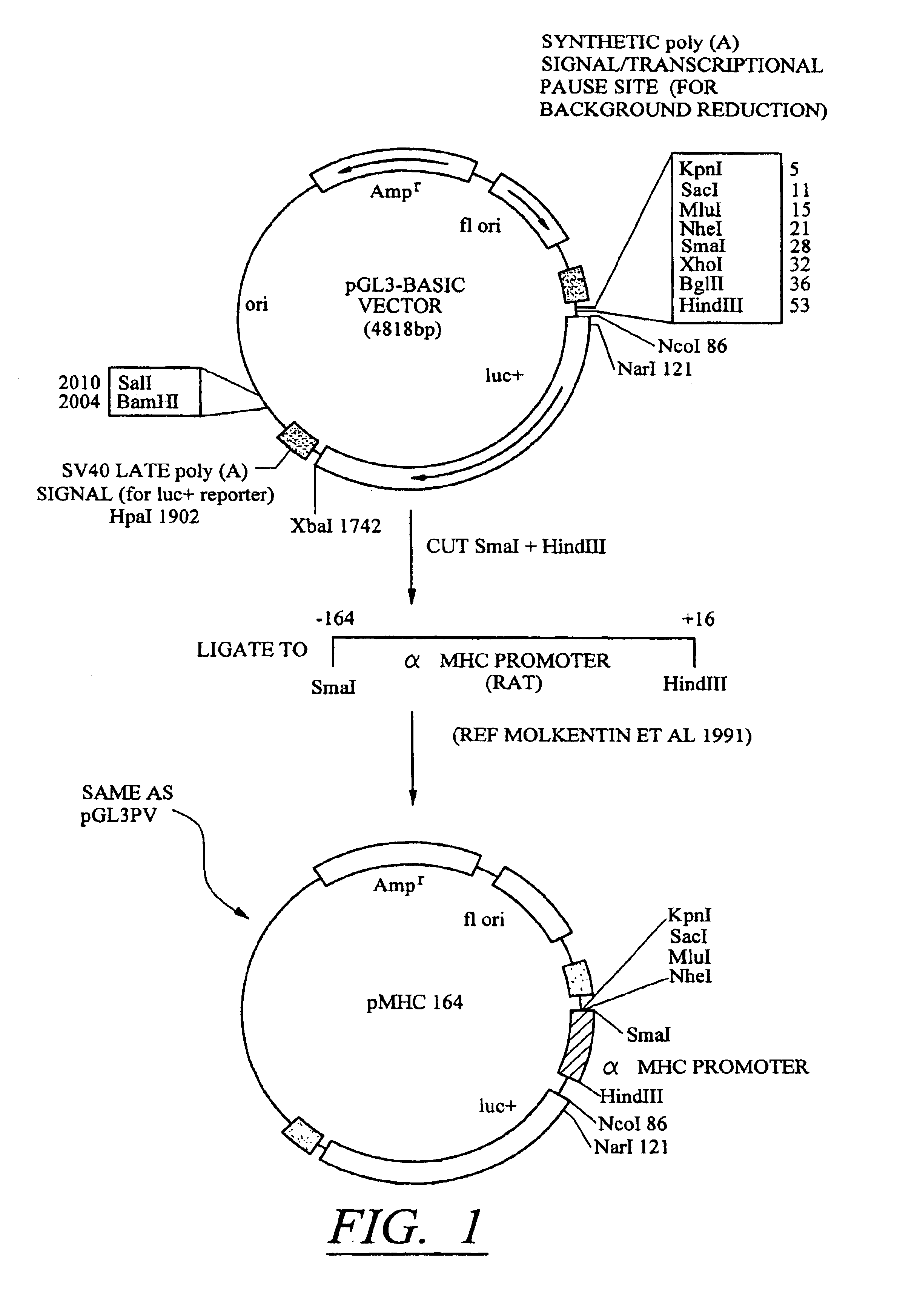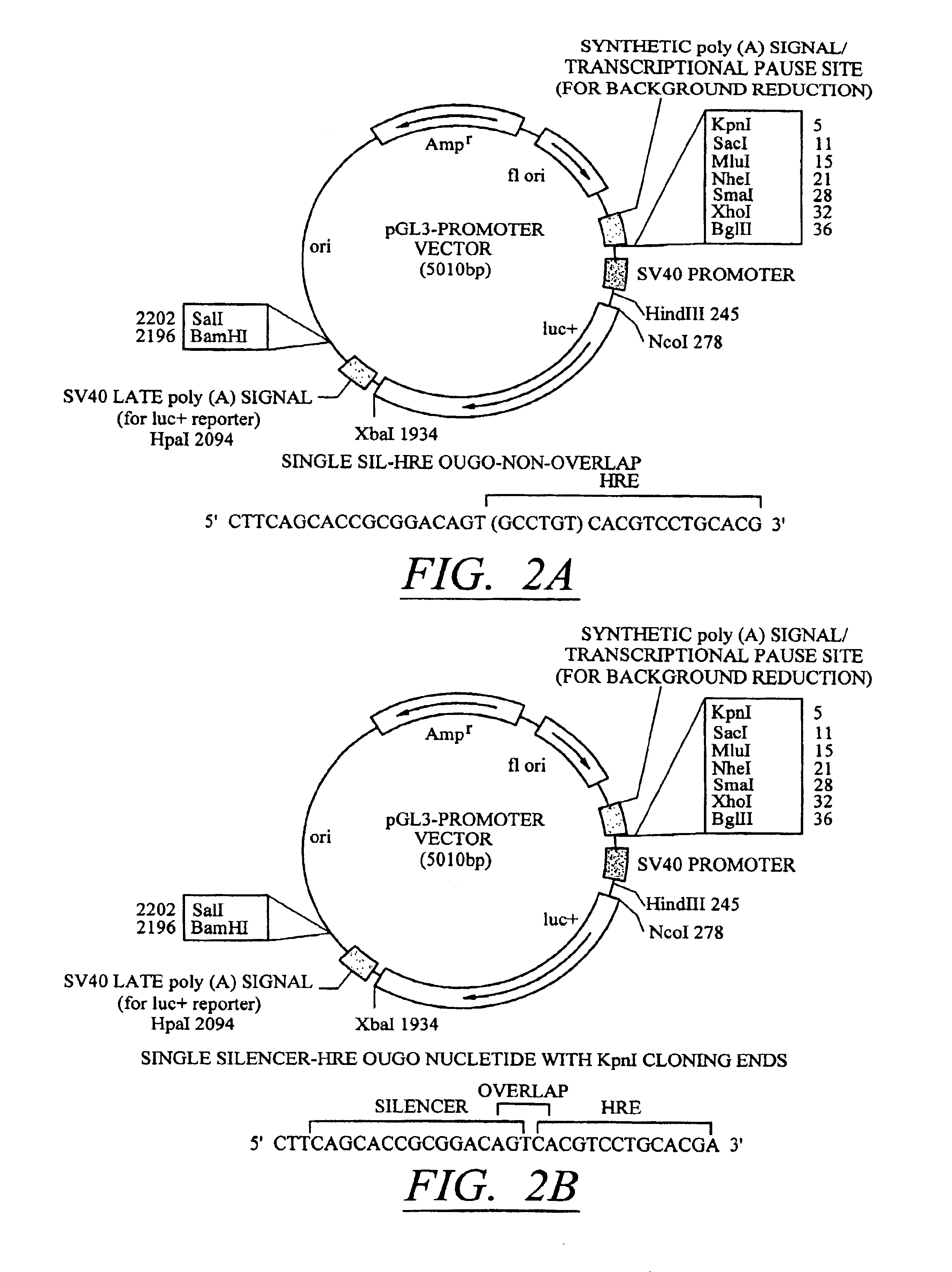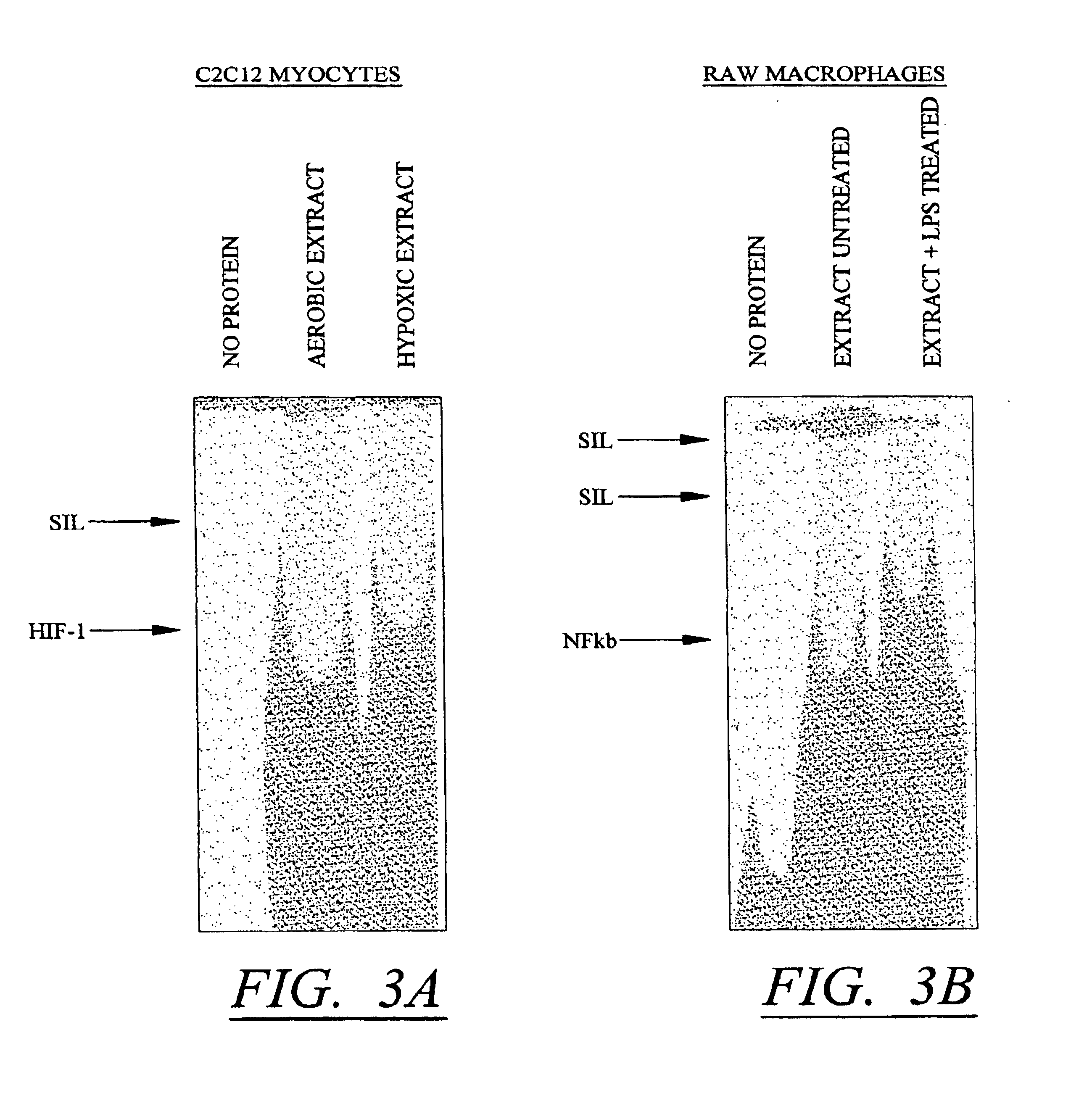Molecular switch for regulating mammalian gene expression
a gene expression and molecular switch technology, applied in the direction of cardiovascular disorders, immunological disorders, drug compositions, etc., can solve the problems of system spatial regulation within a tissue, inability to respond to disease state by intrinsic factors, and major limitations, so as to tightly regulate mammalian gene expression
- Summary
- Abstract
- Description
- Claims
- Application Information
AI Technical Summary
Benefits of technology
Problems solved by technology
Method used
Image
Examples
example 1
Conditional Silencing and Position Dependence
[0093]Silencer-inducer regions containing one, two,or three copies each of a silencer (SIL) element from the human synapsin gene and a conditionally inducible (HRE) element from the phosphoglycerate kinase gene (described above as SEQ ID NOS:5-7) were cloned into the Kpnl restriction enzyme site of pGL3PV as shown in FIG. 2A. These constructs are referred to as pGL3-[SIL / HRE]1, pGL3-[SIL / HRE]2, and pGL3-[SIL / HRE]3. In addition, pGL3-[SIL / HRE]3 (with overlap) was constructed by cloning three copies of an oligonucleotide (SEQ ID NO:8) into the Kpnl restriction enzyme site of pGL3PV as shown in FIG. 2B. pGL3-[SILO / HRE3] was constructed using an oligonucleotide (SEQ ID NO:9) cloned into the Kpnl restriction enzyme site of pGL3PV. Here, the critical bases for binding of transcription factor to the SIL element have been mutated so that the oligo-nucleotide still contains three HRE elements. This construct serves as a control for the SIL element...
example 2
Conditional Silencing with a Tissue-Specific Promoter
[0106]The results described in Tables 1-4 confirm that conditional silencing occurs when SIL and HRE elements were incorporated into the pGLPV vector. This vector uses the SV40 early promoter which is not tissue specific. To determine whether the same effects could be observed using a tissue-specific promoter, the SV40 promoter region of pGL3PV was replaced with a −164 bp sequence containing the promoter of the cardiac-selective α-MHC promoter as described in FIG. 1. Constructs containing SILO / HRE3, [SIL / HRE]2, and [SIL / HRE]3 were made. These were each transfected into cardiac myocytes and the expression of luciferase was measured under aerobic conditions and 24 hr after treatment with hypoxia as described above. The results are shown in Table 5.
[0107]Although the silencer-inducer ratio was less in cardiac myocytes than in C2C12 cells, substitution of the SV40 early promoter with the α-MHC promoter did not change the enhancement i...
example 3
Conditional Silencing with Multiple Inducers
[0109]These studies demonstrate that conditional silencing occurred in three different cell types, was not dependent on the type of promoter used, and involves at least two distinct mechanisms one involving competition of silencer and inducible factors for a hybrid / linked DNA binding site, and one independent of the relative position of the elements. All of these studies involved HRE elements as the conditionally inducible elements which bind instrinsic factors. To determine whether the effect could be extra-polated to other inducible conditions, parallel constructs were made in which the HRE elements were substituted with an NFκB element. The NFκB factor is induced by inflammatory mediators including lipopolysaccharide (LPS). To make these constructs, oligonucleotides containing NFκB-SIL elements (SEQ ID NO:11) and NFκB-SIL-mutant elements (SEQ ID NO:12) were cloned into the Kpnl restriction enzyme site of pGL3PV to produce pGL3-[SIL / NFκB...
PUM
| Property | Measurement | Unit |
|---|---|---|
| temperature | aaaaa | aaaaa |
| humidity | aaaaa | aaaaa |
| final concentration | aaaaa | aaaaa |
Abstract
Description
Claims
Application Information
 Login to View More
Login to View More - R&D
- Intellectual Property
- Life Sciences
- Materials
- Tech Scout
- Unparalleled Data Quality
- Higher Quality Content
- 60% Fewer Hallucinations
Browse by: Latest US Patents, China's latest patents, Technical Efficacy Thesaurus, Application Domain, Technology Topic, Popular Technical Reports.
© 2025 PatSnap. All rights reserved.Legal|Privacy policy|Modern Slavery Act Transparency Statement|Sitemap|About US| Contact US: help@patsnap.com



